Air Way Or The Nitrogen Way?
- By Juili Eklahare
- March 05, 2023
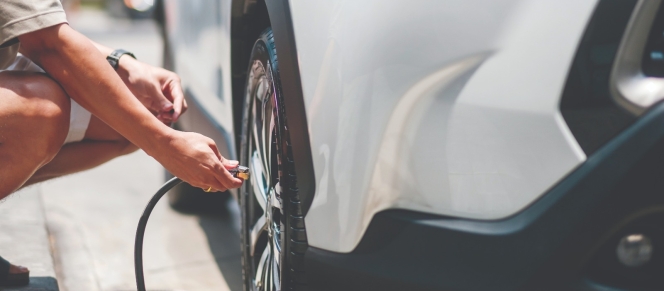
We talk to industry spokespeople and end-users about using nitrogen tyres and air tyres, including their experiences, benefits, myths and more. Read on…
Air tyres are a reality. So are nitrogen tyres. Both have users and suppliers. And many have tried using the two, choosing one over the other. While air tyres are very common, nitrogen tyres are still rolling their way in. Yet there are those who swear by nitrogen tyres and those who could never leave an air tyre’s side.
Benefits experienced from nitrogen tyres
Sneha Phadke, a management generalist based in Pune, India, has been using nitrogen-inflated tyres for the past four years. “When I purchased my two-wheeler, both the tyres were inflated with regular air, which was how I used it for six months. However, a couple of people back then suggested that switching to nitrogen would be more beneficial in terms of the riding experience and prolonging the tyres’ good health,” Phadke recounts, sharing her first-hand experience. “After that, there weren’t frequent punctures, the deflation wasn’t as fast as it happens with regular air, and taking a turn with my two-wheeler is much more comfortable. Air somehow makes the scooter heavier for me to ride – it feels like carrying some extra weight.”
Phadke is of the opinion that as an end-user, there is a significantly distinct experience when one rides a gearless scooter with air-inflated tyres versus a gearless scooter with nitrogen-inflated tyres. However, much did not change in other aspects after moving to nitrogen. For instance, she did not have to invest in extra maintenance for her tyres.
Cost efficiency and trustworthiness
In Phadke’s experience, nitrogen to inflate her scooter’s tyres was easily available to her in Pune. In fact, she already knew four petrol pumps in Pune that provide nitrogen for tyre inflation. “The nitrogen inflation is free. As for the first-time nitrogen inflation, the deflation of air and nitrogen inflation was done at a very nominal cost of INR 20-25 for my scooter,” she says.
Phadke finds it safer to get her tyres inflated with nitrogen at reputed petrol pumps only. This is because she believes that the company staff is properly trained and takes care of all the factors when it comes to checking the tyres and refilling the tyres with nitrogen to the right capacity. “That makes it more cost-efficient, trustworthy and the tyres healthier,” she clarifies. “Plus, the meters at these petrol pumps check the amount of nitrogen in the tyres, which does not give me any reason to doubt the purity of the gas.”
Nitrogen tyres – not for everyone
Like Phadke, Anish Makoday, a BBA student, found the advantage of being able to turn a two-wheeler more smoothly upon switching to nitrogen tyres. “A friend had told me that nitrogen-inflated tyres provide great fuel efficiency. So as petrol prices spiked, I thought that switching to nitrogen would be a good option,” Makoday cites. “Besides, my friends also claimed that nitrogen keeps the tyres cool, and the heat from the road does not affect them much.”
But this was not to last long. “The initial cost for switching to nitrogen (deflation and then inflation) for my scooter was INR 100. I have found the rate of refilling per tyre to differ everywhere, although I have found it to be INR 30-40 at most places,” Makoday informs. “With nitrogen tyres, one does not need to refill their tyres frequently and can refill them twice a month. This led to me often not realising that my tyres were running out of nitrogen and needed refilling. Therefore, I would ride my bike without refilling the tyres for two to three months straight. This resulted in the tyres getting punctured a lot. Unlike nitrogen tyres, regular air tyres require refilling every two weeks, cost up to INR 10 per tyre and one usually tends to refill them immediately once they fill the vehicle’s petrol tank.”
Therefore, Makoday stuck to nitrogen tyres for six months before going back to regular air tyres last year, after facing issues with punctured tyres. Also, he claims that he didn’t experience much difference between the two, except a bit in terms of mileage.
Ikshwaku Deopathak, a musician by profession, too, bid goodbye to nitrogen tyres, one of the reasons being that finding nitrogen stations/pumps was difficult. Nitrogen tyres had also started getting costly for Deopathak. Refilling his car’s tyres with nitrogen cost him a total of INR 200 – that’s INR 50 per tyre. Refilling the tyres with air turned out to be much cheaper, being INR 10 per tyre, he avows.
Access to nitrogen
With the end-users’ different experiences of access to nitrogen for tyre refilling, we ask Amin Almel, CEO, Sunrise Instruments, to throw some light on this aspect. He apprises us that nitrogen refilling options are easily available in cities but can get difficult to access once one heads towards the outskirts and rural areas. “But as petrol pumps are showing up in different parts of the country, nitrogen filling is being made available there,” he states.
Ultimately, one has to take their discipline and riding/driving habits into account when considering moving over to the nitrogen side, Makoday believes. “If one checks and refills their tyres from time to time from the very beginning, unlike me, then nitrogen tyres might be for them,” he states. Sudershan Gusain, Sr DGM Technical Marketing and Standards and Regulations, Bridgestone India, informs that to derive the optimum benefit of nitrogen inflation, the percentage of nitrogen needs to be 95 percent or higher. However, topping up normal air in a nitrogen-inflated tyre once or twice is not known to have any negative impact on tyre life or tyre efficiency.
Nitrogen tyres – a gimmick?
Ravi Chandarana, Co-founder of Kwik Fix Auto, is also one who would not recommend rolling your tyres into the nitrogen territory. “The benefits that people experience through nitrogen tyres are psychological,” Chandarana tells us matter-of-factly. “Nitrogen has been commercialised by tyre shops and petrol stations in the Indian tyre sector. It’s a gimmick; when a tyre shop provides nitrogen for tyre inflation, it advises the end-user to use only nitrogen for their tyres from then on. Thus, the customer tends to keep going back to that respective tyre shop to inflate his/her tyres with nitrogen. That builds the tyre shop’s relation with the customer, and the customer then tends to always remember that particular tyre shop in the back of his/her head. This makes the customer go back to that specific tyre shop a majority of times for tyre inflation and any kind of tyre service.”
Further emphasising his point on how nitrogen is not necessary for tyres, Chandarana highlights that, unlike the availability of air for the same, not every tyre shop and petrol pump out there provides nitrogen for tyre inflation. “That goes to show that not every vehicle tyre is inflated with nitrogen,” he points out. “This further goes on to show that perhaps nitrogen is not that necessary to a tyre – like petrol is to a car. Otherwise, every driver/rider would be using it. If tomorrow nitrogen weren’t available for your tyres, your vehicle would not stop functioning.”
The myths of nitrogen tyres
As it turns out, Chandarana’s Kwik Fix Auto is a tyre dealer and also happens to be a nitrogen supplier for tyres to end-users. But the reason for supplying nitrogen to people’s tyres is solely because there is a demand for it, Chandarana states, but he certainly does not recommend it. He claims that there are several myths related to nitrogen tyres. “For one, people are often told that nitrogen makes their vehicles’ tyres cool. Secondly, it is believed by many that nitrogen tyres would increase their fuel efficiency. However, it’s not really possible to explain this to every customer who comes to me,” Chandarana elucidates.
Another myth related to nitrogen tyres is that once a tyre is inflated with nitrogen, it needs to be refilled with nitrogen alone in the future. Prajakta Jadhav, a teacher trainer who quit nitrogen tyres, claims she was told that inflating with regular air would damage these tyres. Thus, she shares that when she decided to go back to regular air tyres (because nitrogen was expensive for her), she had to wait till her car’s tyres wore out before she could get new ones and inflate them with regular air.
Almel begs to differ with this theory. He clarifies, “If one of your tyres punctures in an emergency situation where you have no access to nitrogen but only air, you can always refill the punctured tyre with air. As long as the pressure is the same, you can drive a vehicle where one tyre may have nitrogen while another may have regular air.”
Digital inflation
Chandarana happens to see one comforting prospect in inflating tyres with nitrogen. That is, nitrogen is inflated into tyres digitally. With digital inflation, one gets the accurate air pressure for their tyres as opposed to analogue meters, which are not properly calibrated, he enlightens.
Using nitrogen tyres in coastal areas
With this one silver lining, Chandarana wouldn’t mind looking favourably on nitrogen tyres, but only from a geographical point of view. He proposes to use nitrogen tyres if one lives in coastal areas. Explaining why, he tells us, “The air in coastal areas is salted. This results in the tyres’ rims getting rusted because of the salted air. In a scenario like this, the nitrogen machine eliminates these gases and inflates the tyres with nitrogen. Otherwise, it doesn’t matter if your tyres have air or nitrogen; what matters is the accurate air pressure.”
Nitrogen quality
In spite of it all, if an end-user still wishes to go for nitrogen tyres (if not living in a coastal area), then it’s important to make sure that the nitrogen is being supplied by a reputed brand,” Chandarana adds. “Secondly, one should make sure that the environment in which the tyre is being inflated has clean air. This is because with polluted air around, one will not get nitrogen of good quality for their tyres.” Gusain adds that using a nitrogen generator to inflate tyres will have better results. “However, the method to inflate is also important,” he says. “If the fitter tops up in a tyre is already inflated with normal air, then that's the wrong way to go. The right way is to deflate the tyre and remove the residual air before inflating it with nitrogen.”
Speaking of nitrogen quality, Basant Nayar, an Associate Director at a financial services firm and who uses nitrogen tyres, always checks the online reviews and ratings of a tyre shop before visiting it. However, Nayar states that one can’t really judge the nitrogen machine.
Tyre tronics to the rescue
While Nayar checks online reviews for the right tyre shop, Karl Pereira, an entrepreneur and nitrogen tyre user, has been refilling his tyres with nitrogen at the same petrol station for the past 17 years. That’s because his car comes with tyre tronics that show the tyres’ pressure and whether the tyres are fine or not. “Once I have refilled my car’s tyres with nitrogen and checked the pressure, I don’t need to refill them for at least a year, or sometimes more, unless the software tells me that there’s something wrong with them,” Pereira tells us.
Why nitrogen tyres matter
Where there’s a demand, there’s supply. And there certainly seems to be a demand for nitrogen in tyres, even if not everyone is opting for it. However, Gusain is of the opinion that choosing between air or nitrogen depends on the need of the consumer and the usage of tyres. Nitrogen has less than half permeability as compared to normal air, which makes nitrogen inflation last longer. However, it is noteworthy that to get the best results, one must continue to inflate at similar frequencies and not have very long gaps.
He further informs, “Nitrogen also has other benefits such as less corrosion of steel wheel and tyre components. In fact, if a commercial truck or bus fleets use retreads, then nitrogen inflation becomes even more important. Besides, it is a more sustainable option as it leads to lesser CO2 emissions. However, it is also the costlier option. So it’s a choice that consumers can make, depending on their preference." Gusain also states that nitrogen inflation is expensive not because of the benefits it offers, but because of the process of using special filters and machines for extraction.
Almel opines that the popularity of the benefits of nitrogen-inflated tyres is being realised by the end-user today. Sunrise Instruments, a manufacturer of nitrogen tyre inflator machines (which act as a filter, separating oxygen and nitrogen), sees clients from tyre shops, petrol stations and dealers from tyre companies like Goodyear, Bridgestone, CEAT and Michelin, Almel tells us. People’s awareness also largely depends on where they choose to inflate their tyres on a regular basis. Well-trained tyre professionals surely educate their customers about the benefits of nitrogen inflation.
Accentuating the expanding market scenario of nitrogen tyres across the world, Almel shares that his company’s nitrogen tyre inflator machines are even exported to UAE and Saudi Arabia. He further points out why nitrogen tyres matter. He posits that being an inert gas, nitrogen does not react. Therefore, there is no reaction with the rubber and metal parts in the tyres. “This extends the tyres’ life,” he goes on to explain. “Additionally, it’s important for the tyre pressure to remain stable as per the vehicle manufacturer’s guideline. This will, in the long run, lead to better fuel mileage, better control of the vehicle and comfort while driving/riding the vehicle. And with nitrogen tyres, the tyre pressure remains stable for a longer period of time, giving you all of this.”
Regular air, on the other hand, contains 21 percent of oxygen, which tends to react and deteriorate the tyre quality, according to Almel. Nitrogen tyres have only 1 percent of other gases and 99 percent of nitrogen itself, which is dry nitrogen.
When asked about the opinion from the other side of the table, Almel avers that if nitrogen hadn’t been important to tyres, then it wouldn’t have been used in aircraft tyres and race car tyres. “And the cars driven on Indian highways are no less than a race car, given their speed,” he puts across. “People have limited time today and are constantly in a rush. These aspects make it important to have nitrogen-inflated tyres in order to have a maintained tyre pressure and to drive safely.”
A subjective choice
Whether a nitrogen tyre works best or an air tyre does, it really comes down to personal experience. Even if not recommended by many, nitrogen tyres do not appear to cause any harm. But our vehicles would be nowhere without tyres (literally), and they certainly are one of the most significant components of our vehicles. If our tyres aren’t right or the pressure has gone wrong, it could endanger a life. Therefore, while one picks a tyre that works best for them, looking at the big picture, it needs to work in every aspect – from cost to convenience to safety. After all, if vehicles can be subjective, why can’t tyres?
Japan’s Zeon Lifts Full-Year Profit Outlook On Strong Battery Materials, Optical Films Demand
- By TT News
- November 04, 2025
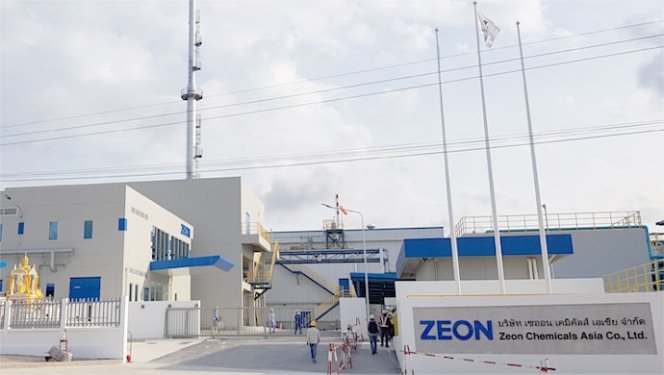
Japanese chemicals maker Zeon Corporation raised its full-year operating profit forecast after first-quarter earnings more than doubled, driven by robust demand for battery materials and optical films.
The Tokyo-based company, which produces speciality plastics and synthetic rubbers, posted operating income of 12.1 billion yen ($83.3 million) for the three months to June 30, up 136 percent from the previous quarter and 59 percent higher year-on-year.
Net sales declined 2 percent to 103.1 billion yen from a year earlier, affected by yen appreciation and lower elastomer prices reflecting declining raw material costs. However, sales volumes of optical films and battery materials increased during the period.
The company revised its full-year operating income forecast upwards to 30.5 billion yen from a previous estimate of 28 billion yen. However, this still represents a 9 percent decline from the prior year. Full-year sales are now expected to reach 415 billion yen, up 4 percent.
Zeon maintained its annual dividend forecast at 72 yen per share and said it is proceeding with a share buyback programme of up to 10 million shares or 10 billion yen for the current fiscal year.
The speciality materials business, which includes optical plastics, films and battery materials, generated operating income of 7.4 billion yen in the first quarter, jumping 40 percent year-on-year. Sales in the division fell 3 percent to 29.3 billion yen, partly due to timing differences at overseas affiliates related to the Chinese New Year.
Demand for battery materials remained steady, supported by China’s electric vehicle subsidy policies, whilst shipments to the United States energy storage systems market began during the quarter. The company said European EV sales showed signs of recovery, though inventory adjustments were prolonged.
In optical films, shipments increased due to expanded market share in large-sized televisions, whilst demand remained steady for tablet and smartphone applications.
The elastomer business posted operating income of 4.2 billion yen, up 12 percent from a year earlier, though sales were flat at 58.1 billion yen. The division was affected by weak overseas demand and lower selling prices caused by falling raw material costs.
Zeon also announced plans to sell a portion of its investment securities between August 2025 and March 2026, expecting to book a gain of approximately 10.9 billion yen to improve capital efficiency. The move is expected to reduce its cross-shareholdings ratio to around 11-12 percent of net assets by the end of the fiscal year.
The company said it had completed a reorganisation in June, transferring its chemicals business to the speciality materials division to accelerate decision-making and maximise profitability.
For the second half of the year, Zeon cautioned that optical film shipments are expected to decline due to panel production adjustments and seasonal mobile device demand. However, it described the adjustment as temporary with growth anticipated in fiscal 2026.
Continental Launches All-New TKC 80² Off-Road Motorcycle Tyre
- By TT News
- November 04, 2025
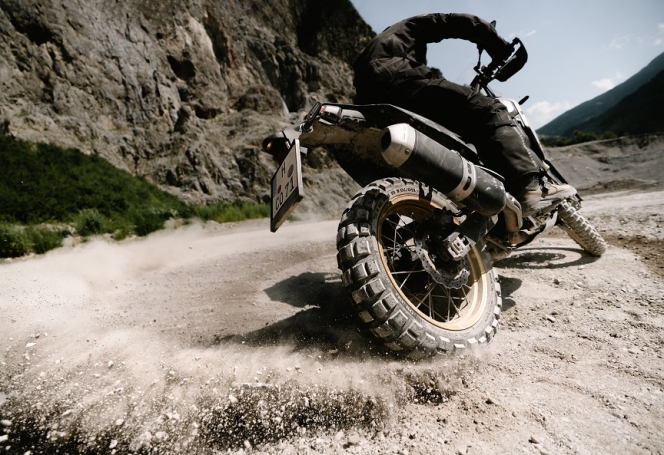
Continental is redefining adventure riding for a new generation with the launch of the TKC 802, a complete re-imagining of its legendary TKC 80 tyre. After four decades, this isn't a simple update but a fundamental redesign crafted for today's powerful and heavy adventure motorcycles. It answers a clear call from riders who are increasingly drawn to uncharted paths, yet refuse to sacrifice performance on the journey there. The TKC 802 is engineered to be an uncompromising partner for this dual-purpose lifestyle.
Its performance begins with a cleverly engineered tread. The pattern uses larger, strategically shifted blocks that create more biting edges for superior grip in dirt, sand and gravel. This design also actively resists clogging, ensuring consistent performance where other tyres might pack up with mud. Stability is enhanced through a larger contact area, inspiring confidence whether carving a paved corner or navigating a rocky trail. The logic even extends to direction: the front tread is angled to dig in during braking, while the rear is designed in the opposite way to maximise acceleration traction without excessive digging.
Beneath the tread, a new carcass provides the backbone. It is specifically calibrated for a balanced 50/50 use, offering the robust stability needed for a loaded bike at high speeds or on demanding off-road sections while also improving ride comfort through optimised damping. An advanced rubber compound tackles the classic trade-off, delivering aggressive grip across diverse surfaces while also promising remarkable longevity and wear resistance. This is complemented by RainGrip technology, which instils confidence by maintaining secure handling when the weather turns cold and wet.
Built for epic journeys on every continent and backed by robust puncture protection, the TKC 802 is for those who ride without limits. To fit a broad spectrum of modern travel enduros from brands like BMW, KTM and Ducati, it will be produced in multiple sizes. With its distinct new sidewall icon, the Continental TKC 802 will be available at specialist retailers starting in Spring 2026.
Raphael Michels, Product Manager for Motorcycle Tires at Continental, said, “Our new flexible rubber compound adapts perfectly to the micro-roughness of the asphalt, providing excellent grip. At the same time, we’ve worked intensively to resolve the conflict between on- and off-road performance in the best possible way. The tyre tread combines maximum flexibility for safe wet grip with high block stiffness for stability and mechanical grip.”
Christoph Ettenhuber, Head of Business Field Motorcycle Tires at Continental, said, “With the TKC 802, we’re setting new standards in terms of versatility, robustness and off-road performance. The combination of innovative tread design, new rubber compound and optimised carcass offers adventure riders maximum safety, control and riding pleasure on a wide variety of terrains.”
Bridgestone Unveils BATTLAX RACING STREET RS12 Motorcycle Tyre
- By TT News
- November 03, 2025
Bridgestone has confirmed a January 2026 launch for its new premium sports motorcycle tyre, the BATTLAX RACING STREET RS12, in North America. Developed under the concept ‘From Circuit to Street,’ this road-legal tyre is engineered to deliver the highest level of dry grip within the BATTLAX lineup by directly incorporating technologies refined in competitive racing.
The RS12 features a specialised compound derived from race tyre development, which works in concert with a newly designed tread pattern. This pattern’s optimised groove ratio enhances overall tyre rigidity and increases the contact area during cornering for superior grip. A significant innovation for the front tyre is the introduction of the HE-MS BELT structure, a technology previously reserved for top-tier global motorcycle races. This flexible belt system equalises contact pressure to provide a further boost in traction.
By integrating these endurance-racing technologies, the RS12 achieves comprehensive performance improvements on the circuit, with a primary focus on dry conditions. The result is a notable reduction in lap times compared to its predecessor, the RS11. Furthermore, the synergistic combination of its compound, pattern and structure ensures that the high grip level is consistently maintained over multiple laps, resisting performance degradation. This gives riders confidence and a more engaging experience across diverse riding scenarios, from aggressive sport riding on dry pavement to tackling winding roads and dedicated track days.
Rubber Board Donates Cleaning Equipment Worth INR 1 Mln to Kottayam Medical College
- By TT News
- November 03, 2025
India's Rubber Board has donated floor cleaning equipment valued at Rs 10 lakh to Kottayam Medical College as part of the Central Government's cleanliness initiative.
The equipment, comprising a scrubber dryer floor cleaning machine and a vacuum cleaner, was handed over at a ceremony held at the medical college on Sunday.
M Vasanthagesan IRS, Executive Director of the Rubber Board, presented the equipment at a meeting presided over by V N Vasavan, Kerala's Minister for Co-operation, Ports and Devaswom.
The event, conducted under the Centre's 'Swachhata Action Plan', also recognised cleaning workers at the medical college.
Dr Varghese Punnoose, Principal of Kottayam Medical College, Dr T K Jayakumar, Superintendent of the institution, and Dr Binoi K Kurien, Secretary in-charge of the Rubber Board, addressed the gathering.
The Rubber Board, a statutory body under the Ministry of Commerce and Industry, oversees development and regulation of India's rubber industry.


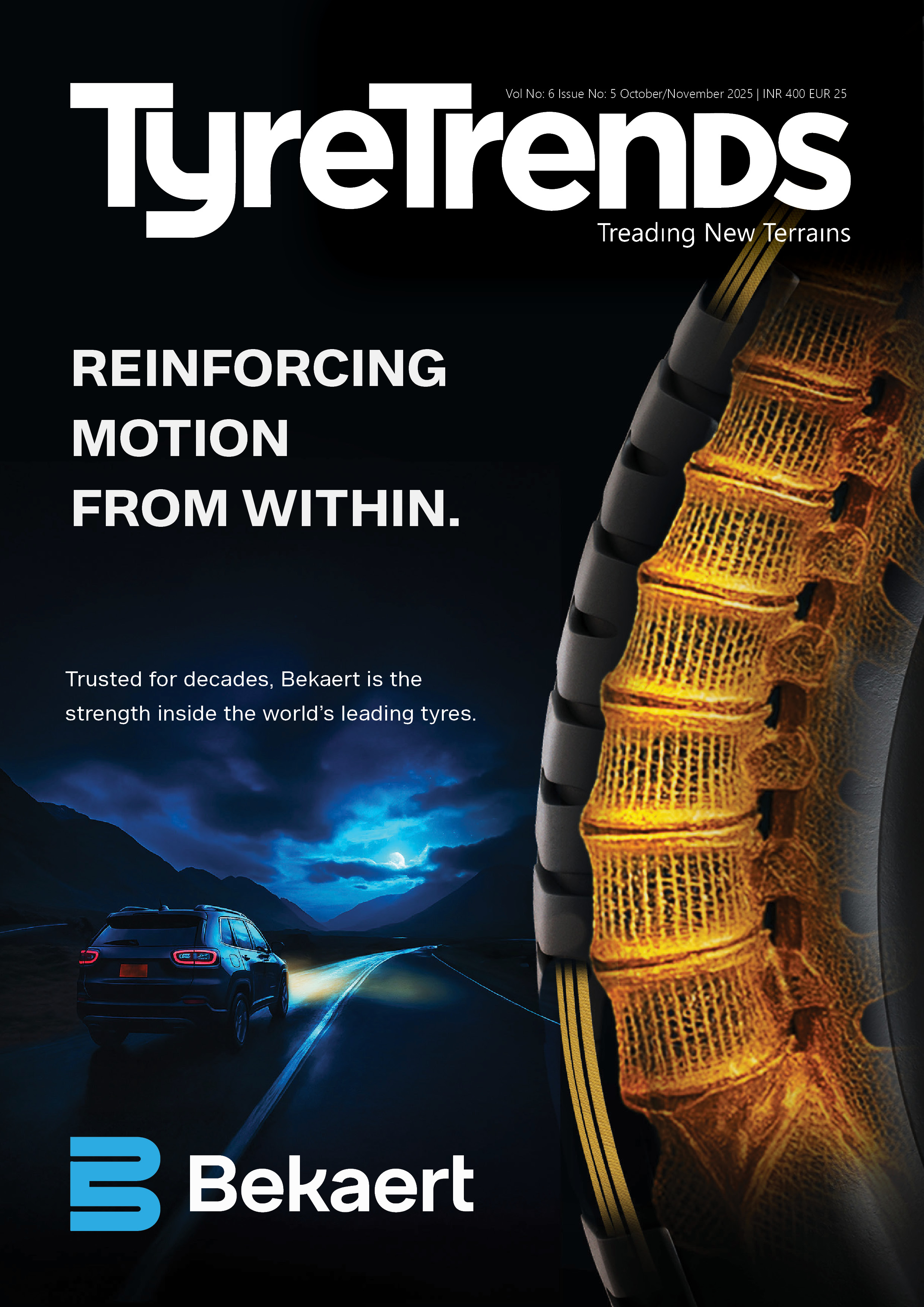

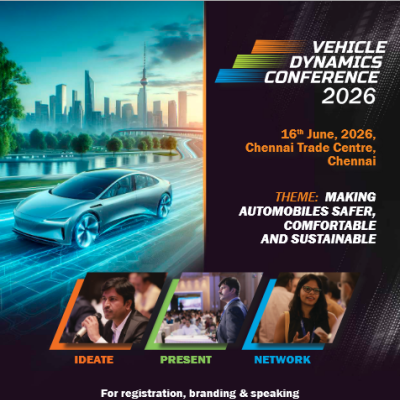

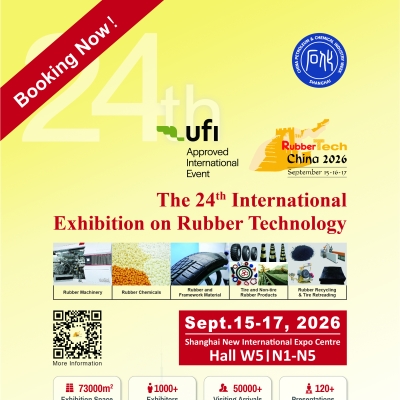
Comments (0)
ADD COMMENT